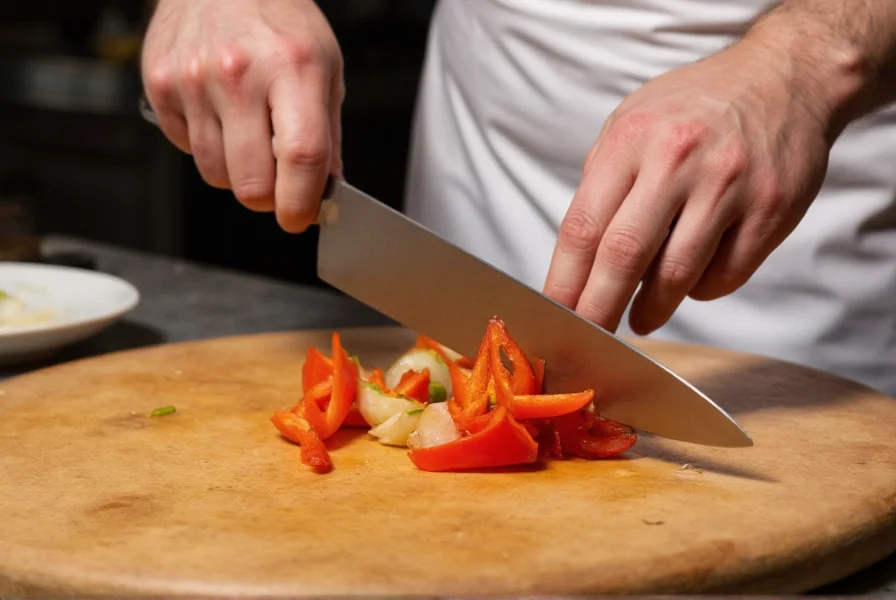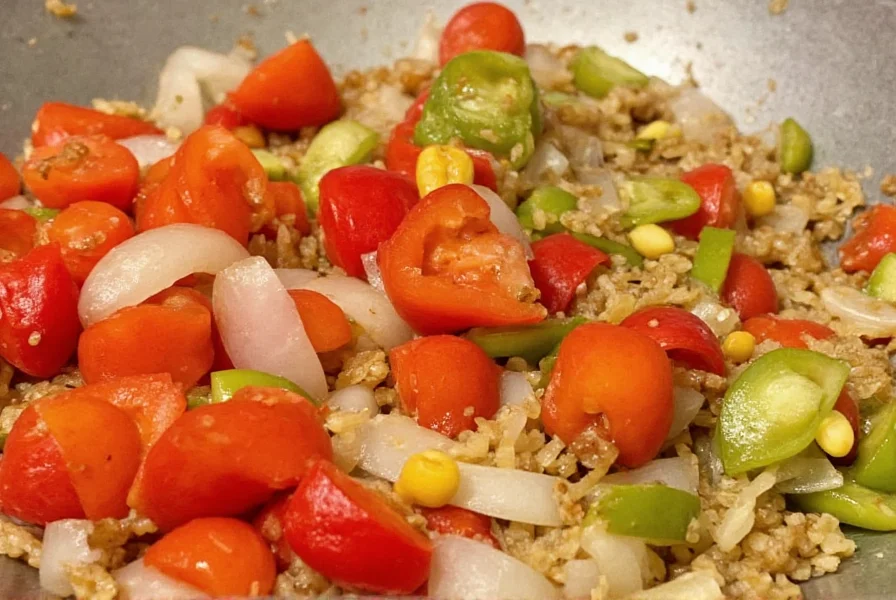Mastering the art of sautéing peppers and onions transforms this basic cooking technique into a culinary superpower. Whether you're preparing a quick weeknight meal or crafting an elaborate dish, properly cooked peppers and onions add depth, sweetness, and complexity that elevate your entire recipe. Many home cooks struggle with common pitfalls like burning, uneven cooking, or ending up with soggy vegetables instead of the desired tender-crisp texture with caramelized edges.
The Science Behind Successful Sautéing
Understanding the chemistry of cooking peppers and onions helps you achieve consistent results. When exposed to heat, onions undergo two key processes: caramelization of natural sugars and the Maillard reaction with amino acids. Peppers, with their higher water content, require careful moisture management. The ideal temperature range for sautéing falls between 325-375°F (163-190°C)—hot enough to sear but not so hot that vegetables burn before cooking through.
Water content plays a crucial role in your sauté technique. Onions contain about 89% water, while bell peppers contain approximately 92%. When you add vegetables to a hot pan, this moisture immediately begins to evaporate. If you crowd the pan, the vegetables steam instead of sauté, preventing proper browning. This explains why professional chefs emphasize using enough oil and adequate pan space for optimal results when learning how to saute peppers and onions without burning.
Essential Equipment and Ingredient Selection
Your choice of cookware significantly impacts your sautéing success. A 10-12 inch cast iron or carbon steel skillet provides excellent heat retention and distribution. Stainless steel works well too, but avoid non-stick pans for high-heat sautéing as they limit browning potential. The pan should be heavy enough to maintain consistent temperature when vegetables are added.
Selecting the right oil matters for both flavor and performance. Consider these options based on smoke point and flavor profile:
| Oil Type | Smoke Point (°F) | Best For | Flavor Notes |
|---|---|---|---|
| Avocado oil | 520 | High-heat sautéing | Neutral, clean |
| Grapeseed oil | 420 | Medium-high heat | Light, neutral |
| Canola oil | 400 | Everyday sautéing | Mild, versatile |
| Extra virgin olive oil | 325 | Lower heat applications | Fruity, distinctive |
When choosing peppers, consider both color and variety. Bell peppers range from sweet green (least sweet) to red, yellow, and orange (sweetest). For more complex flavor, try poblano, Anaheim, or sweet banana peppers. Onion selection dramatically affects your final dish:

Step-by-Step Perfect Sauté Technique
Follow this professional method for consistently excellent results when preparing pepper and onion saute:
- Preparation: Slice onions pole-to-pole (through the root) into ¼-inch thick slices. Cut peppers into similar-sized strips. Uniform size ensures even cooking.
- Pan preheating: Heat your skillet over medium-high heat for 2-3 minutes until a drop of water sizzles and evaporates immediately.
- Oil addition: Add 1-2 tablespoons of oil, swirling to coat the bottom evenly.
- Onion first: Add onions in a single layer. Let sit undisturbed for 2 minutes to develop fond (browned bits).
- Initial stir: Stir onions, then let sit another 2 minutes. Repeat this process for 6-8 minutes until translucent with golden edges.
- Pepper addition: Add peppers and stir to combine. Continue cooking 5-7 minutes, stirring every 2 minutes.
- Seasoning: Add salt after vegetables begin to soften (salt draws out moisture too early).
- Finishing: Cook until peppers reach tender-crisp stage with some caramelized spots.
This sequence—cooking onions first—takes advantage of their longer cooking time requirement. Onions need approximately 8-10 minutes to reach perfect tenderness and caramelization, while peppers typically require only 5-7 minutes. Adding them at different times prevents overcooking the peppers while ensuring onions develop their full sweetness.
Troubleshooting Common Sauté Problems
Even experienced cooks encounter issues with pepper and onion sauté. Here's how to fix the most frequent problems:
- Burning vegetables: Reduce heat immediately. Your pan is too hot. Ideal sautéing happens at medium-high, not high heat. If food sticks and burns, start over with a clean pan at lower temperature.
- Soggy results: You've overcrowded the pan or stirred too frequently. Use a larger skillet and allow vegetables to sit undisturbed for 2-minute intervals to develop browning.
- Uneven cooking: Inconsistent vegetable size causes this issue. Take time to cut uniformly. Smaller pieces cook faster than larger ones.
- Excessive smoke: Your oil has exceeded its smoke point. Next time, choose an oil with higher smoke point or reduce heat slightly.
When rescuing an overcooked sauté, add a splash of liquid like broth, wine, or vinegar to deglaze the pan and incorporate flavorful fond while cooling the vegetables slightly. This technique transforms potential disasters into complex, restaurant-quality results.

Flavor Variations and Culinary Applications
Once you've mastered the basic technique for perfect pepper and onion saute, experiment with these professional variations:
- Mexican style: Add cumin and chili powder when vegetables are halfway cooked. Finish with fresh lime juice.
- Sweet & savory: Deglaze with 2 tablespoons balsamic vinegar during the last 2 minutes of cooking.
- French inspiration: Substitute shallots for half the onions and finish with fresh thyme.
- Asian fusion: Add minced garlic and ginger with the peppers, finish with soy sauce and sesame oil.
These sautéed vegetables serve as the foundation for numerous dishes. Use them as:
- Topping for burgers, sandwiches, and wraps
- Base for fajitas, stir-fries, and pasta dishes
- Component in omelets, frittatas, and quiches
- Flavor enhancer for soups, stews, and sauces
- Stand-alone side dish with fresh herbs
For meal prep efficiency, cook a large batch and store in airtight containers for 3-4 days. Reheat gently in a skillet rather than microwave to maintain texture. Freezing is possible but may alter texture slightly—best for use in cooked dishes rather than as a standalone side.











 浙公网安备
33010002000092号
浙公网安备
33010002000092号 浙B2-20120091-4
浙B2-20120091-4